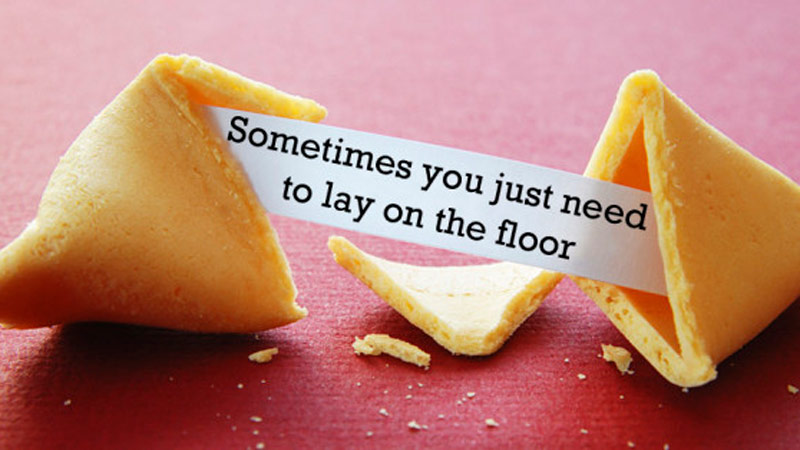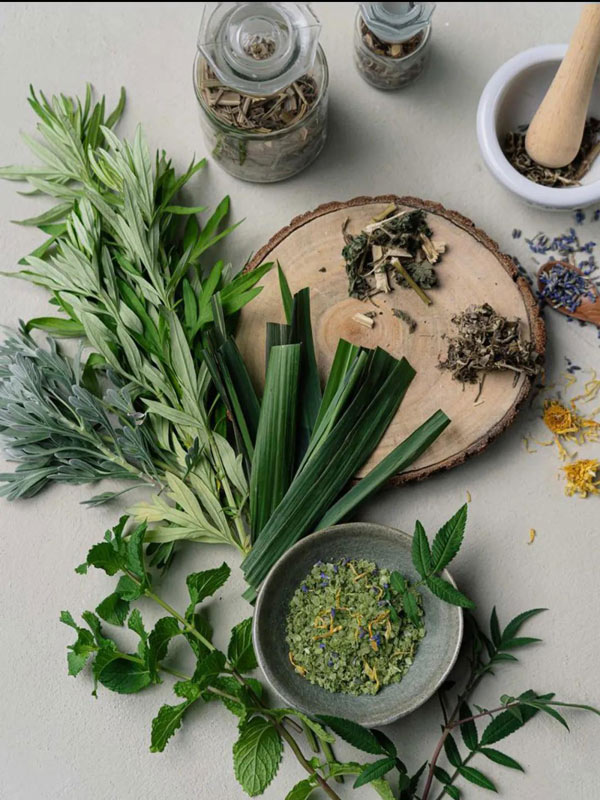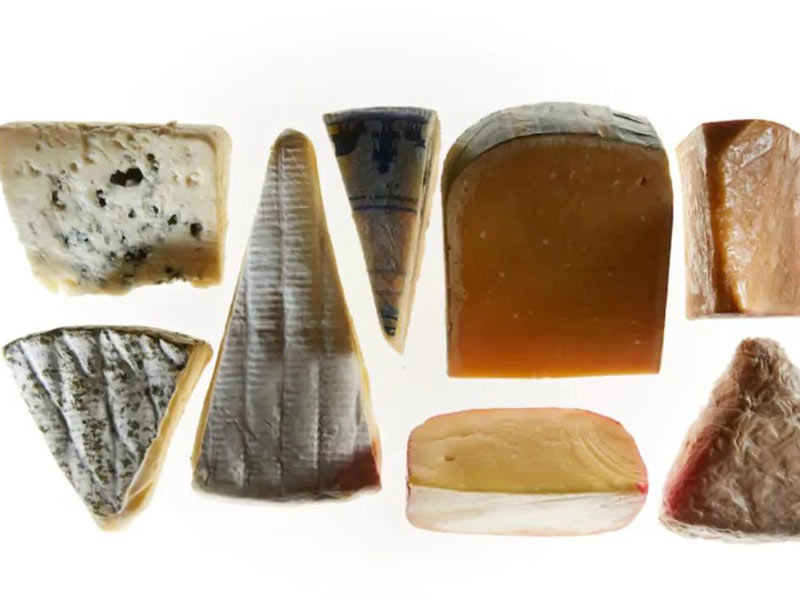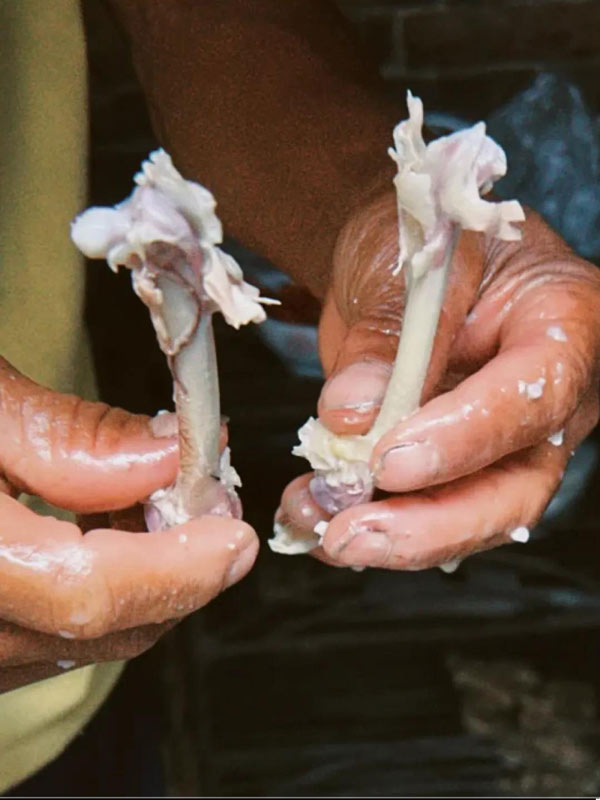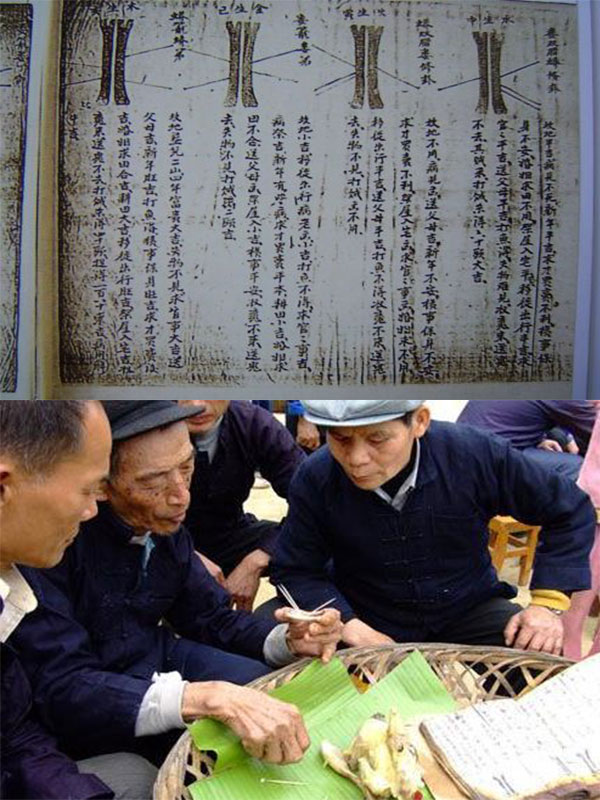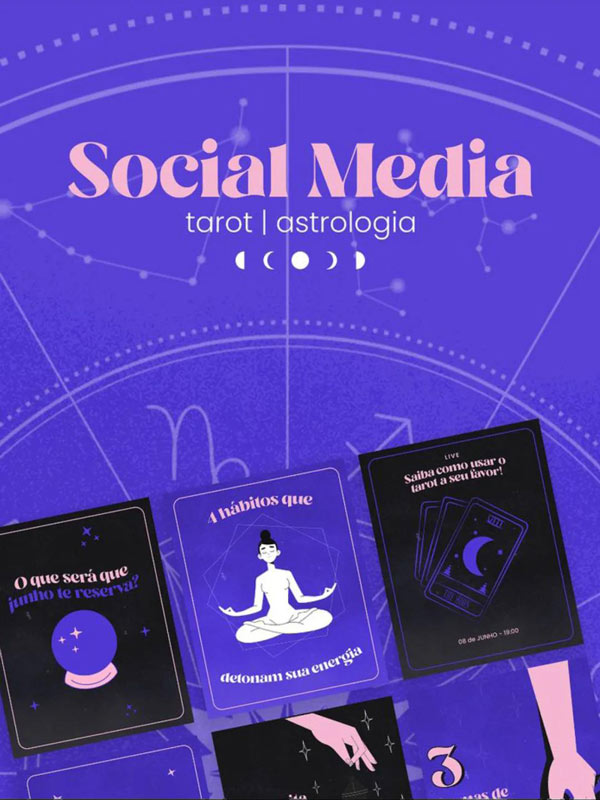Every year, during the Dragon Boat Festival (端午节), you'll see families across China hanging bundles of mugwort (艾草) on their doors, wearing fragrant sachets close to their bodies, and tying colorful threads on children's wrists. In places like Henan and Zhejiang, pots are filled with garlic and eggs. These time-honored traditions, passed down for thousands of years, form a complete "protective system" against evil spirits. But the Dragon Boat Festival isn't just a day to remember the poet Qu Yuan. Its long-standing folk practices signify a celebration of life, a prayer for the living, and a struggle against the uncertainty of life.
 Traditional Food Rituals as Protection During Festivals
Traditional Food Rituals as Protection During Festivals
A saying goes, "If you don't wear mugwort on Dragon Boat Festival, you'll turn into a ghost after death." Mugwort and calamus, often placed at the thresholds of homes, act like plant-based charms, creating a symbolic barrier to safeguard both family and body. Food, which enters the body directly, forms an even closer connection with people and is given the special power to ward off evil spirits. For example, the red beans, salted egg yolks, and salted meats wrapped inside zongzi (粽子, traditional sticky rice dumplings) are considered "yang objects" (阳物), believed to counterbalance the "yin" (阴, or negative forces) with their positive, solid nature. The "five yellow foods" (五黄) — yellow eel, yellow fish, yellow cucumbers, yellow beans, and yellow wine — also play a role in the ritual, acting as visible, edible forms of protection. These foods help to "calm" the body. In a way, these foods serve as a protective device, wrapping us in layers of safety.
Anthropologist Mary Douglas, in her book Purity and Danger, emphasized that "the classification of food is a projection of social order." What we eat is a reflection of how the world should be. This concept, where food creates order and responds to uncertainty, lies at the heart of the Dragon Boat Festival customs. But it's not just about Chinese traditions; it resonates with food divination practices across the globe. Everywhere, people have sought to glimpse the future through food.
 Cross-Cultural Phenomenon of Food Divination Around the World
Cross-Cultural Phenomenon of Food Divination Around the World
In the coffeehouses of Istanbul, after finishing a cup of Turkish coffee, people gently flip the cup over, waiting for the residue at the bottom to dry and solidify. Once the coffee grounds have set, a "cup reader" interprets the patterns. This practice, known as Tasseography, remains popular along the eastern shores of the Mediterranean. Meanwhile, across the northern shores in Europe, cheese divination (Tyromancy) has long been a part of tradition. It reached its peak during the Middle Ages and Early Modern period, and recently, it has enjoyed a resurgence, particularly because it allows the "diviner" to enjoy a tasty snack while foreseeing the future, making it more interactive than other divination methods.
On New Year's Eve in Eastern Europe, people break a whole round loaf of bread without any cuts, and the direction and depth of the cracks help predict whether the household will be peaceful in the coming year. In Scandinavia, people hide almonds in Christmas porridge, and finding one is considered a sign of good fortune. In some ancient regions of Western Europe, wedding cakes are baked with coins or rings inside, symbolizing the fate awaiting the newlyweds.
Far across the ocean in South America, Peruvians follow a tradition of eating grapes on New Year's Eve, which originates from Spain's Las Doce Uvas De La Suerte (12 Lucky Grapes). As the clock strikes midnight, people eat 12 grapes, each representing a month of the upcoming year, symbolizing blessings and hopes for each month. If the grapes are sweet, it's thought that the corresponding month will go smoothly; if they're sour, it signals challenges ahead. Among Native American tribes in North America, the number and arrangement of corn kernels are used to ask about hunting prospects and predict weather patterns. Food divination knows no boundaries—time or space—and whether it's a coin hidden in a dumpling or a fortune cookie with a lucky slip of paper, it's a subtle whisper of good fortune buried in our holidays, everyday moments, or even while traveling far from home.
"Food is a threshold where materiality and symbolism intertwine." According to anthropologist Arjun Appadurai, when we predict love through coffee grounds or interpret omens from the shape of a holy wafer, we are translating the abstract uncertainty of the future into a system of symbols that we can act upon. A broken piece of bread or a burnt corn husk can become a form of communication between us and the future.
When food enters our stomachs and its changes are interpreted, the blend of material and symbolic elements transitions the mind from one edge of uncertainty to the other. In that moment, we find a brief sense of peace.
 From Superstition to Cultural Dialogue
From Superstition to Cultural Dialogue
When we talk about food divination, it is often misunderstood as mere superstition. However, food divination is not about deciding one's fate; rather, it is a form of dialogue and storytelling.
In China, the practice of using a chicken's thigh bone to predict fortune has a long history, recorded in works like Records of the Grand Historian and Book of Han. The Ancient Chicken Diagram even contains illustrations of 492 different ways to interpret the divination. In the oil-rice village along the Jinsha River, the Mosuo people sit together along the riverbank, waiting for their moment of cleansing.
All the festive foods are products of the family's labor, and they are shared by every member. Simple, home-cooked meals are the most comforting, and gnawing on clean bones is a way to show respect for the other lives that became food. The family's divination, conducted by its core members, is not only a dialogue with cultural traditions and ancestors but also a way of expressing hopes for the family's future.
The ritual typically takes place during important holidays or when the family faces major decisions. Before beginning, the family members bathe, a gesture of respect for the gods and ancestors. Then, a chicken is chosen, slaughtered by the family elder, and its meat is cooked. As the meal, prepared by the entire family, is shared, each member carefully gnaws at the chicken bones, ensuring the bones remain intact.
After the meal, the experienced elder selects specific bones, such as the thigh or breast bone, to conduct the divination. By observing the bone's shape, cracks, color, and other features, they interpret the symbolic meaning contained within, predicting future fortune or guiding family decisions. This process is not just an inquiry into the future but also an important way to strengthen emotional bonds between family members and to pass down cultural heritage. In this context, the quality or taste of the food seems secondary; what matters is that all family members are present for the ritual.
The shared meal not only physically bridges the threshold moments of the ritual but also psychologically fosters intimacy and a sense of belonging within the family. Anthropologist Victor Turner believes that in rituals, food becomes a "passport" that crosses the boundary between humans and gods. The interpretation of chicken bone patterns is not just about predicting one's fortune but about communicating with the heavens, ancestors, and the family.
These food rituals that communicate with the divine are often not made with rare delicacies. In fact, they may even return to simplicity. The "ghost chicken (鬼鸡)" used by the Jingpo people to avert disasters was originally a ritual food for sacrifices to spirits and ancestors. Its initial recipe simply called for salt, local coriander, ginger, and chili, a straightforward formula with a thousand variations in flavor. Over time, it became part of everyday meals, enjoyed by many and modified to suit different tastes. However, not everyone who makes or eats the ghost chicken can use it to communicate with another world or hear the whispers hidden in the mist. These Jingpo people, living on the borders and in the mountains, accept the differences and imaginations that individuals have in their food experiences.
As Professor Zhang Wenyi of Sun Yat-sen University's Department of Anthropology said in his work What Does Jingpo Ghost Chicken Taste Like? "Anthropology introduces the concept of embodied knowledge to understand human experience: the cognitive—social attributes and emotions—sensory attributes, neither reducing experience to social rules nor simply viewing it as individual creativity and imagination." They allow the biological and social to intertwine in the unspeakable, and in doing so, find a shared humanity across different ages, genders, and beliefs.
In these ritual practices, food is not just a vessel for nutrition or flavor, but also a medium for understanding, sharing, and placing emotions. They do not dictate how the future will unfold but offer a way to interpret the present and find an outlet. Even if the outcome is just a vague clue, this cultural logic is not blind obedience to the supernatural, but a low-threshold response to the uncertainties of life. The essence of food divination is a temporary agreement signed between humans and the unknown forces—building a community through shared food to cope with uncertainty.
 Food Divination and Consumerism in Modern Society
Food Divination and Consumerism in Modern Society
An increasing number of food-related divination trends—such as food tarot, tarot cakes, and even TikTok readings of chicken bones—have gone viral on social media and short video platforms. In the era of big data, information from different platforms is interconnected, making it no longer surprising that user "emotions" can be predicted. Artificial intelligence, combined with the principles of the Five Elements and Chinese astrology, subtly integrates fortune predictions with product links, blending the ancient with the modern, faith with commerce.
These phenomena may seem absurd, but they reflect a contemporary expression of an ancient divination logic—today, in a world dominated by algorithms, people increasingly need tangible material symbols to connect with their touchable fate. Perhaps people no longer believe in fate read from coffee grounds or chicken bones, but the anxiety and uncertainty they experience have become a defining issue of the times. Those engaging in online divination are more concerned with whether their emotions are acknowledged, their relationships understood, and whether their fate can be gently touched.
The theory of "Risk Society" by sociologist Ulrich Beck is evident here: when technology fails to eliminate uncertainty, folk symbols will revive in the form of consumerism. The "retro" trend of internet divination is merely another disguise of humanity's attempt to combat anxiety. The rise of Mosuo chicken divination trending on social media is not just because it's mysterious, but because it offers a tangible, observable model of fate interaction.
In an attention economy led by algorithms, such folk knowledge is being repackaged and redistributed, even alienated as content material. These once-local traditions are removed from their original context and placed into new viewing structures and emotional rhythms, becoming a medium for relieving anxiety, leveraging topical discussions, or performing cultural differences—a curious experience for the audience.
This is the destiny of "food divination" in the modern era. It is both content and metaphor, an ongoing attempt to find certainty by stitching life back together in absurd ways. Food divination builds a dual intimacy between people and material—physically and psychologically—and can move from the individual to the collective, creating a bond of "shared fate." It allows modern people to briefly touch a controllable unknown in a 3-second video.
In Victor Turner's concept of "liminal states," rituals often occur when the regular order is absent. Liminal states are transitional spaces that are both dangerous and generative; they temporarily suspend the rhythms and order of daily life, reshaping identity and meaning. Food divination is a miniature and specific ritual—it uses everyday food as a medium to place individuals into situations where the world can be rearranged.
When you see a pattern in coffee grounds or bite into a red date hidden in a zongzi (rice dumpling), you are participating in a symbolic sorting, trying to extract a sense of structure from chaos and find the main melody in a variation. Food is not just nourishment; it is the boundary encoder of culture, a way society defines order and chaos. We use food to demarcate seasons, affiliations, fortune, and vision, to affirm our relationship with the world. This is why, even in the cases of tarot coffee or TikTok chicken soup, we still want to believe in what it tells us. It is not that the divination predicts the future; rather, it is our way of asking and proving that we are not alone in bearing, choosing, and waiting.
From the wormwood of the Dragon Boat Festival to the Mosuo chicken divination, from coffee grounds to tarot cakes, humans have been repeating the same act: using food to contain the chaotic fate in familiar containers. When we follow the traditional customs of eating five types of fish and drinking wormwood wine during the Dragon Boat Festival, are we not performing a miniature ritual?
In a time when risk and uncertainty reign, perhaps what we need most is this gentle negotiation with food—even if it's just a crack on a piece of bread, it can make us believe that while fate is uncontrollable, at least it is chewable.
